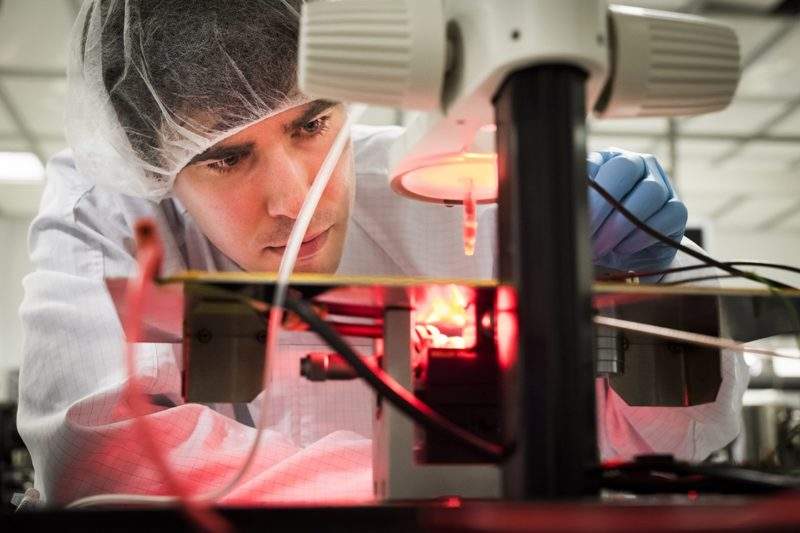
A microscopic retinal implant could restore sight to visually impaired people by converting light into electrical signals, researchers from Sweden, Israel, Italy, and Austria have found.
The paper ‘Direct electrical neurostimulation with organic pigment photocapacitors’, published in the journal Advanced Materials, describes the composition of the implant, which was constructed from organic pigments found in printing inks and cosmetics.
The implant contains nanometre-sized pixels, similar to those found in a digital camera but each roughly 100 times thinner than a single human cell.
“We have optimised the photoactive film for near-infrared light, since biological tissues, such as bone, blood and skin, are most transparent at these wavelengths,” said research lead and Linköping University organic nanocrystal expert Eric Glowacki. “This raises the possibility of other applications in humans in the future.”
The implant contains a pigment of semi-conducting nanocrystals on a thin gold sheet, which turns light into electrical signals, stimulating the retina. The retina consists of several thin layers of cells, including light-sensitive neurons in the back of the eye that convert light to electric signals; these signals are transferred along the optic nerve from the retina to the brain’s visual cortex.
As the implant converts light into electrical signals, it could be used to provide sight to individuals whose retina cells are no longer sensitive to light.
How well do you really know your competitors?
Access the most comprehensive Company Profiles on the market, powered by GlobalData. Save hours of research. Gain competitive edge.

Thank you!
Your download email will arrive shortly
Not ready to buy yet? Download a free sample
We are confident about the unique quality of our Company Profiles. However, we want you to make the most beneficial decision for your business, so we offer a free sample that you can download by submitting the below form
By GlobalDataThe artificial retina has been described by Glowacki as a ‘microscopic doughnut’, with the crystal-containing pigment in the middle, surrounded by a tiny metal ring. As the implant requires no external connectors, the nerve cells are crucially activated without delay.
“The response time must be short if we are to gain control of the stimulation of nerve cells,” says Tel Aviv University postdoctoral researcher David Rand. “Here, the nerve cells are activated directly. We have shown that our device can be used to stimulate not only neurons in the brain but also neurons in non-functioning retinas.”







